This post contains affiliate links for which I may make a small commission to help keep the site running. You will not be charged extra for these items had you not clicked the links. Thank you for your help to keep the site running!
Whether you’re a big fan of tuna and sweetcorn or PB&J, sandwiches are an integral part of life in both the UK and US.
Maybe you’re having finger sandwiches at an afternoon tea, maybe you’re packing sandwiches for lunch at the beach, maybe you’re buying a sandwich at a café or you’re sitting down to a homemade sandwich, packed with your favorite flavors and fillings.
My personal favorite sandwich in the whole world that I could eat every single day is a peanut butter sandwich – hold the jelly, but I also like turkey sandwiches, coronation chicken sandwiches, and egg sandwiches in case you ever need to know this bit of sandwich trivia about me
But what’s more interesting is that the history of the sandwich itself has a UK history!
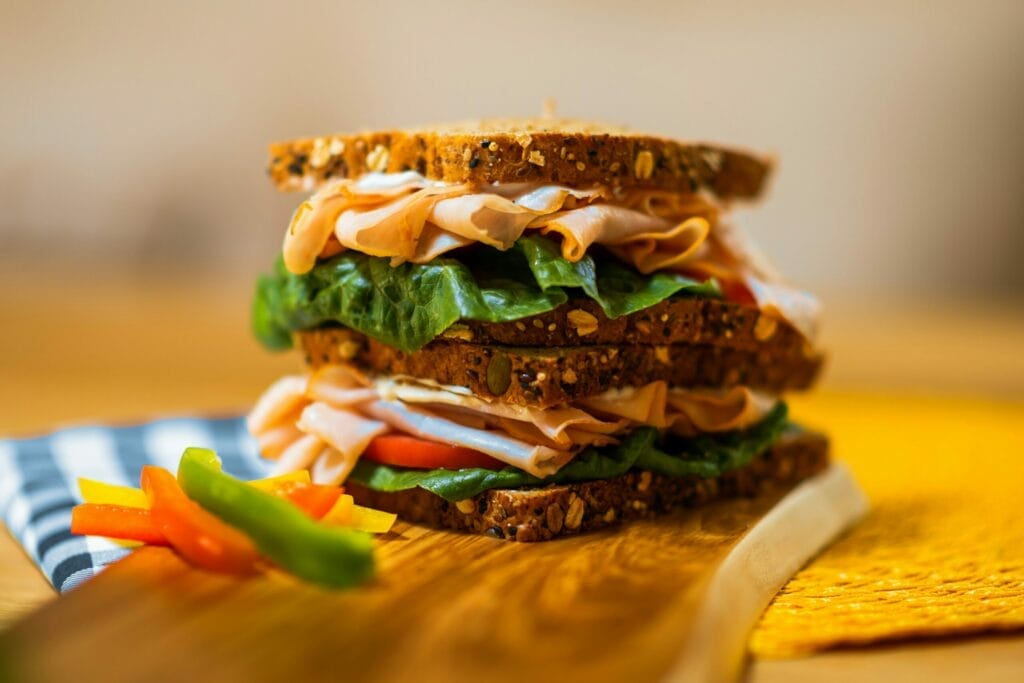
Sandwich History
The story goes that the Earl of Sandwich, John Montagu (technically the 4th Earl of Sandwich), invented the sandwich in 1762 when asking for roast beef to be served to him between 2 slices of bread.
There’s even a franchise of sandwich shops now called the Earl of Sandwich – I’ve been to one in Orlando!
Now, was he really the first person in the whole world to ever think about eating food this way?
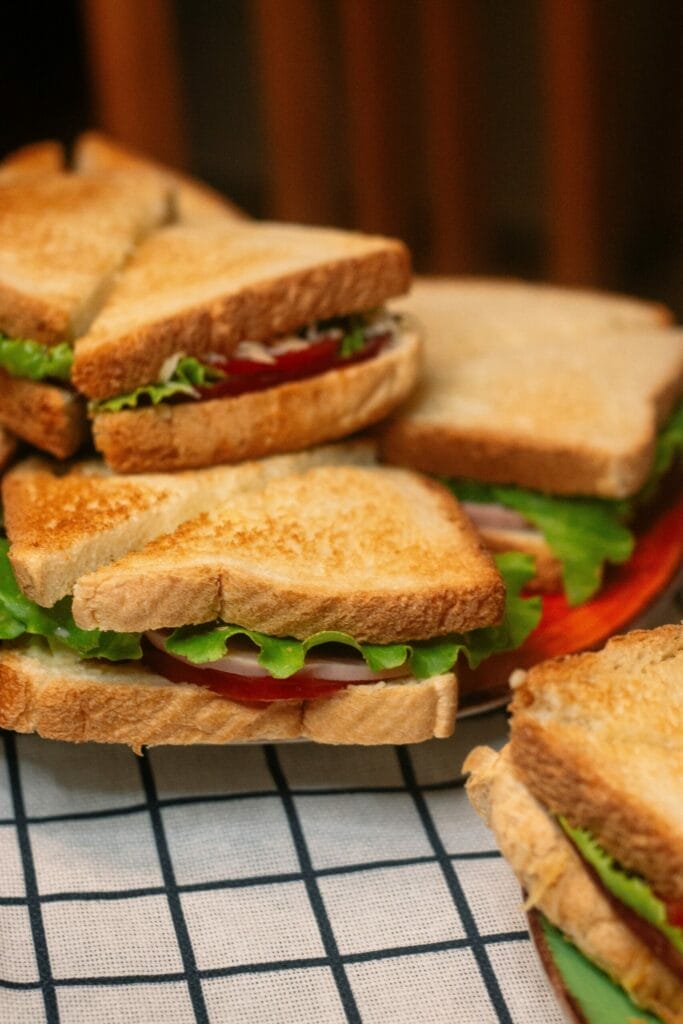
Probably not, as people had been eating combinations of bread and fillings way before that, but he is really credited with the creation of the modern sandwich and made it popular among England’s gentry.
That being said, sandwiches didn’t immediately sweep either nation.
They were served, of course, but in England they were at first considered something served outside the home, not something you would make for yourself, and I found a hilarious bit of information that stated that, in America, “many colonial cooks in the last half of the 18th century were not especially fond of imitating British culinary trends.”
So Americans just didn’t want to adopt the concept quite so soon because they didn’t want to be seen as doing something British – classic Americans.
Either way, sandwiches eventually earned their important place in the daily lives of people in both the UK and the US over the years, but they definitely differ in what we put on them.
UK vs US Sandwich Spreads
One of the major differences that always gets pointed out in these types of videos is that, yes, it is true, Americans do not typically butter their bread for a sandwich.
Buttering bread for a sandwich is very popular among the Brits – you would butter the sides of the bread that are going to be facing the fillings, to act as a barrier and not let the bread go soggy from any soggy ingredients. Also, to add to the flavor.

Americans really don’t do this – I couldn’t tell you the exact reason why – it’s not that Americans don’t like butter, we do, but if you’re going to slather anything on your bread for a sandwich, it’ll like be mayonaiise or mustard, not butter.
And not everyone does that – they might add the condiments within the fillings, but not necessarily slathering it directly onto the bread beforehand.
The only exception I can think of for this is a grilled cheese sandwich in the US – you butter one side of each piece of bread, but not the side touching the cheese – the side that will touch the pan (if you’re not familiar, grilled cheese in the US is made in a pan or skillet, so the buttered side of the bread goes heat side down so it browns up).
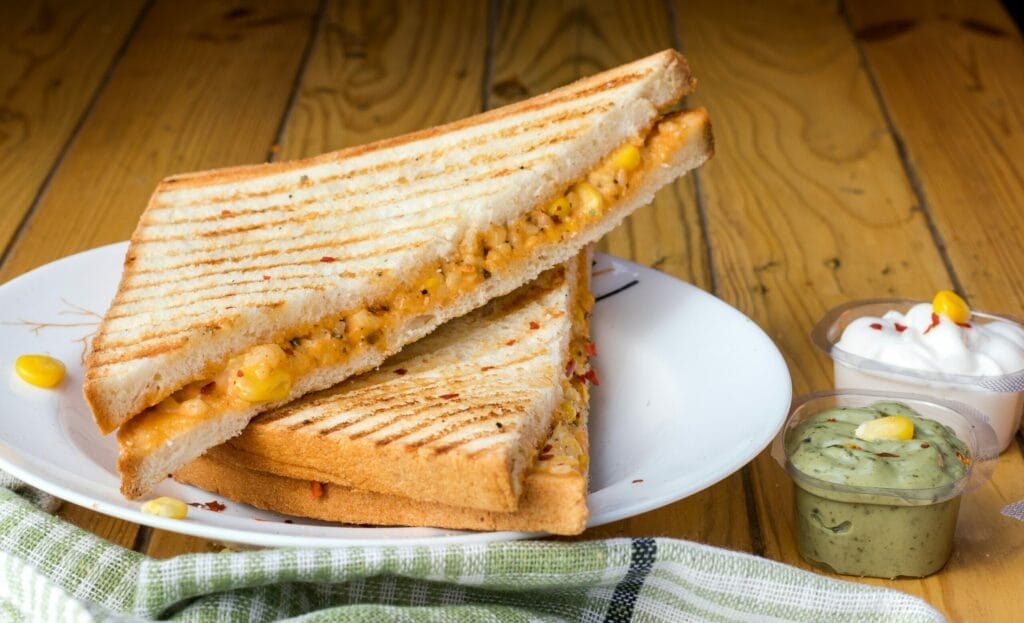
Types of Sandwiches in the UK vs USA
Let’s talk about the types of sandwiches and fillings most popular in each country.
Comparing the sandwiches that are popular in each country, let’s start with the UK.
This is from a poll done by M&S and Costa Coffee for British Sandwich week, which apparently runs from May 22nd to May 28th. Mark your calendars.
- Ploughman’s sandwich (ham, cheddar, pickle, mustard, lettuce)
- Ham and cheese
- Cheese
- Roast chicken salad sandwich
- Prawn mayo sandwich
- Egg and cress sandwich
- BLT sandwich
- Tuna and sweetcorn
- Chicken and bacon
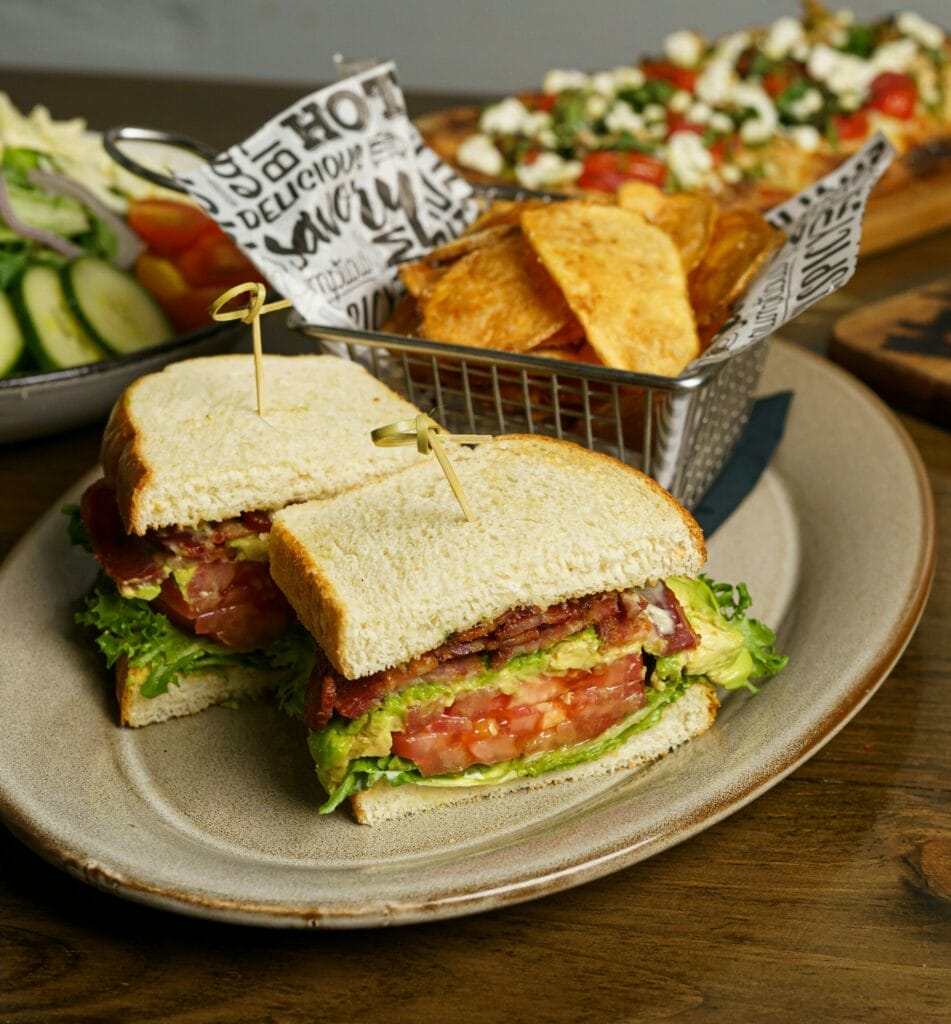
Let’s move on over to the American side of things – what are the American favorite sandwiches?
One list I found went:
- grilled cheese
- grilled chicken
- turkey
- roast beef
- ham
- BLT
- club (typically turkey, bacon, lettuce, and tomato)
- peanut butter and jelly
- pulled pork
- tuna
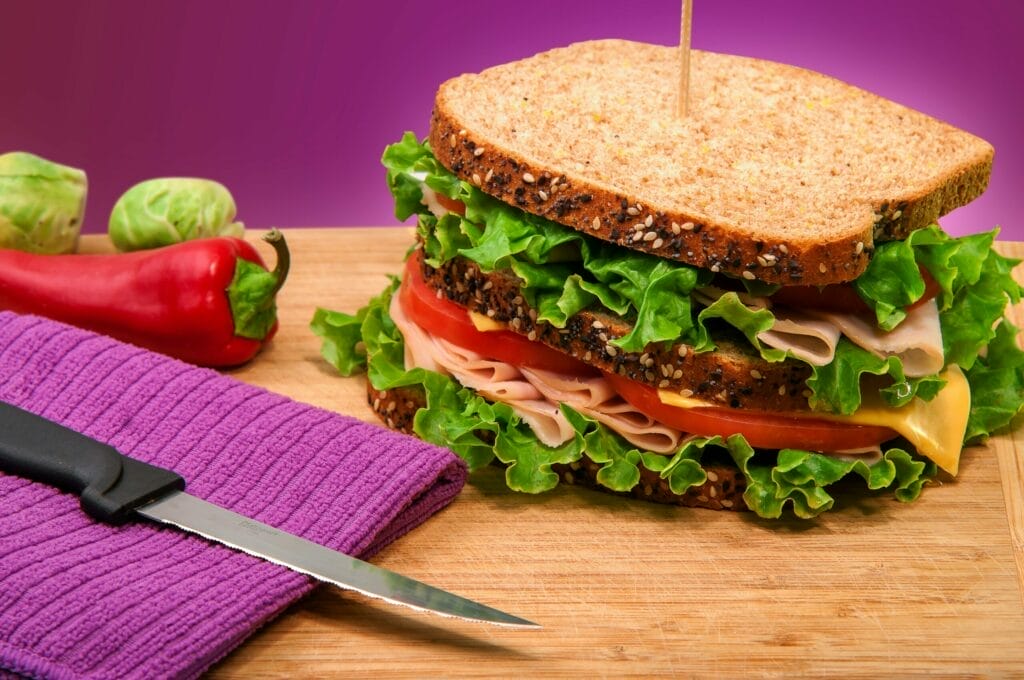
There are a few similarities between the two countries – BLT and chicken sandwiches for instance, but one major difference – and you’ll notice this if you ever eat out in the US and the US – the US LOVES turkey sandwiches. LOVES them.
On almost every restaurant menu that serves sandwiches. Found in lunch boxes all over the country. Obsessed.
In the UK, I think the only real time I’ve seen a turkey sandwich is maybe when someone made a leftover sandwich from Christmas lunch.
Turkey isn’t eaten commonly in the UK like it is in the US.
I’ve got a whole section on the more weird sandwich combinations next, but just to help us define some of the different sandwiches…
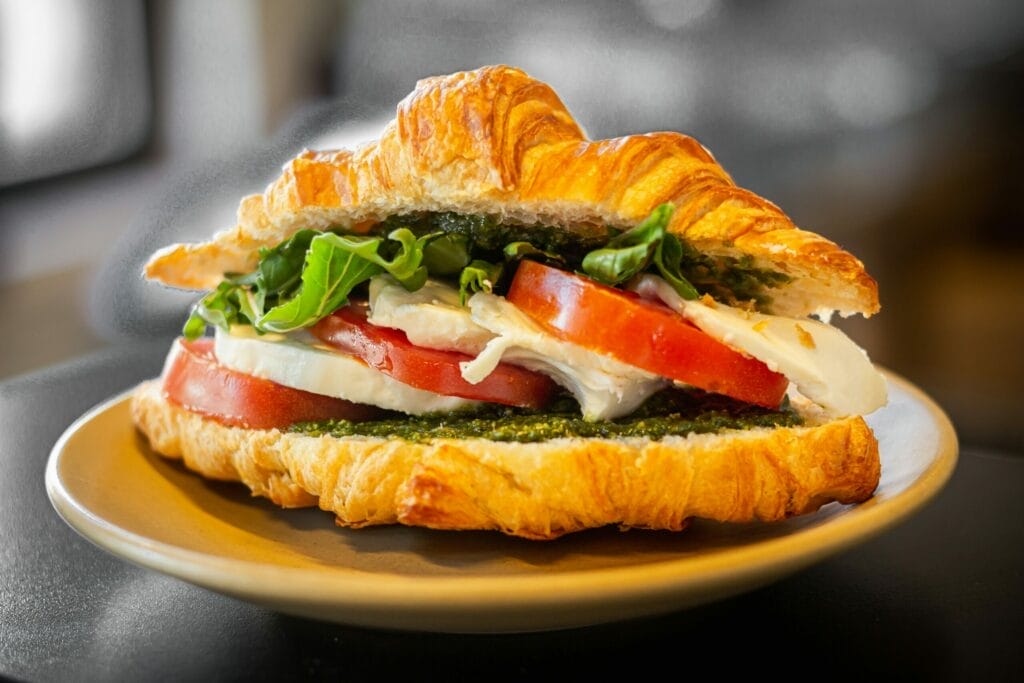
In the US, a peanut butter and jelly sandwich is extremely popular – jelly in the US is essentially jam (for the Americans out there, jelly in the UK is gelatin – not the same!).
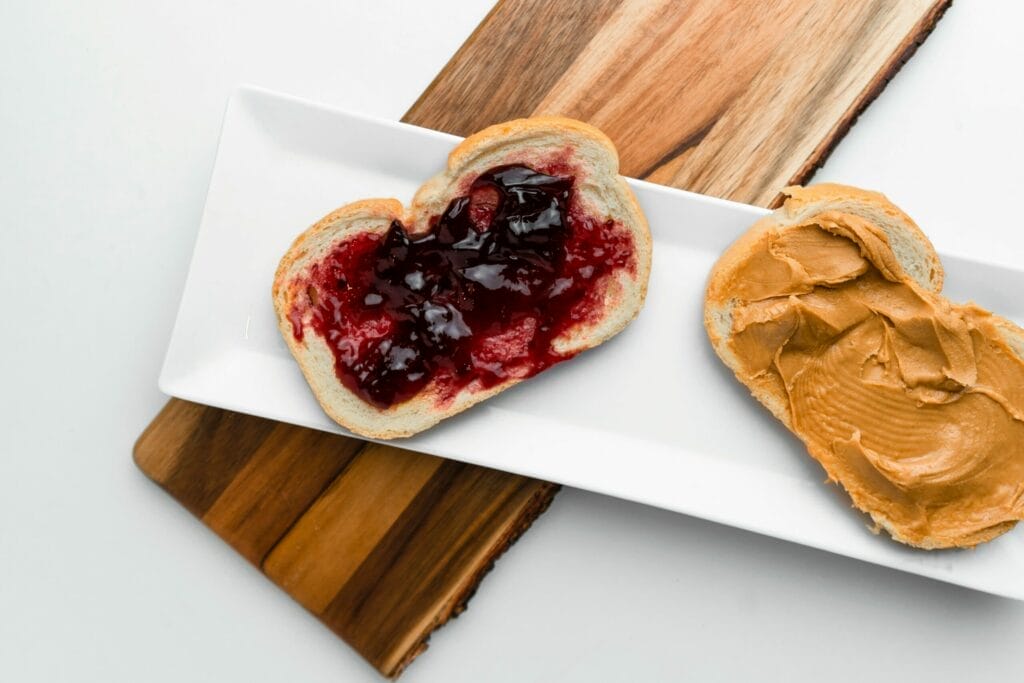
A peanut butter and jelly tastes great, like I said, I’m more a fan of the peanut butter than the jelly, but it’s a staple in American households everywhere.
Some people put the peanut butter on one piece and the jelly on the other piece and smush it together, and some people spread one first, then try to spread the other on top of it, which doesn’t usually work out so great.
Getting the perfect PB to J ratio is a real art form.
We typically use grape jelly as the most common flavor, then strawberry next.
You can even buy PB and J sandwiches with the crusts cut off, known as uncrustables, for kid’s lunches – yes, Americans love convenience and processed food, we can’t help ourselves.
Also in the US, you have the Reuben sandwich, which is a grilled sandwich composed of corned beef, Swiss cheese, sauerkraut and thousand island dressing in between Rye bread.
As well as the Cuban sandwich, a variation of ham and cheese sandwiches made with ham, pork, swiss cheese, pickles, and mustard typically.
In the UK, we’ve discussed a ploughman’s, but Americans probably also haven’t heard of coronation chicken sandwiches, which are shredded chicken mixed with mayo, yogurt, curry powder, and chutney in between 2 pieces of bread.
This also didn’t make the list of most popular UK sandwiches, but another type of sandwich that’s very popular is a cucumber sandwich and smoked salmon sandwiches, both popular with like an afternoon tea style sandwich.

Other ones to note: brie and grape, stilton and walnut, fish finger sandwich, cheddar cheese and strawberry jam, banana sandwich, beef and mustard, cottage cheese and celery, cheese and pickle, condensed milk sandwich, brie, bacon and cranberry sauce sandwich – basically British people will put anything between 2 slices of bread.
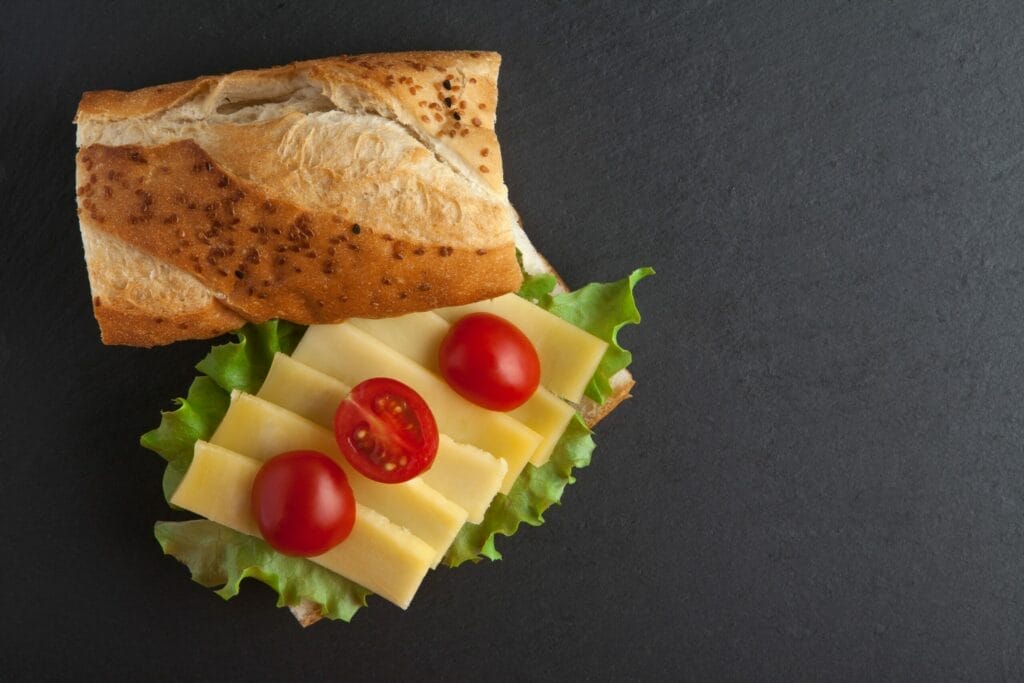
Weird Sandwiches in the USA and UK
Next up, let’s talk about “out of the ordinary sandwiches people don’t have every day, but definitely do exist!”
In the UK, we have the chip butty and the crisp butty – one is chips (thick cut fries) between bread, and one is crisps, known as potato chips in the US, in between bread, and while I have never had a crisp butty, I have had multiple chip butties and I absolutely approve and would eat them everyday if it didn’t mean I’d weigh like 1000 pounds.
In the US, we have the fluffernutter – peanut butter and marshmallow fluff served on white bread, the dagwood, a tall, multi layered sandwich filled with so many different types of meats and cheeses named after the comic strip character, Dagwood, the monte cristo, a ham and cheese sandwich dipped in egg and fried, the po’boy, roast beef on a baguette with origins in Louisiana, and the Primanti, famous in Pittsburgh and featuring grilled meat, melted cheese, coleslaw, tomato, and French fries between two pieces of thick bread.
The Primanti actually leads me into my next difference, the amount of filling in a sandwich.
This is something I wouldn’t necessarily have noticed myself, but after doing my research and reading enough comments about it, I agree – the US typically tends to add more fillings in their sandwiches, bulking them out and making them huge.
UK vs USA Breakfast Sandwiches
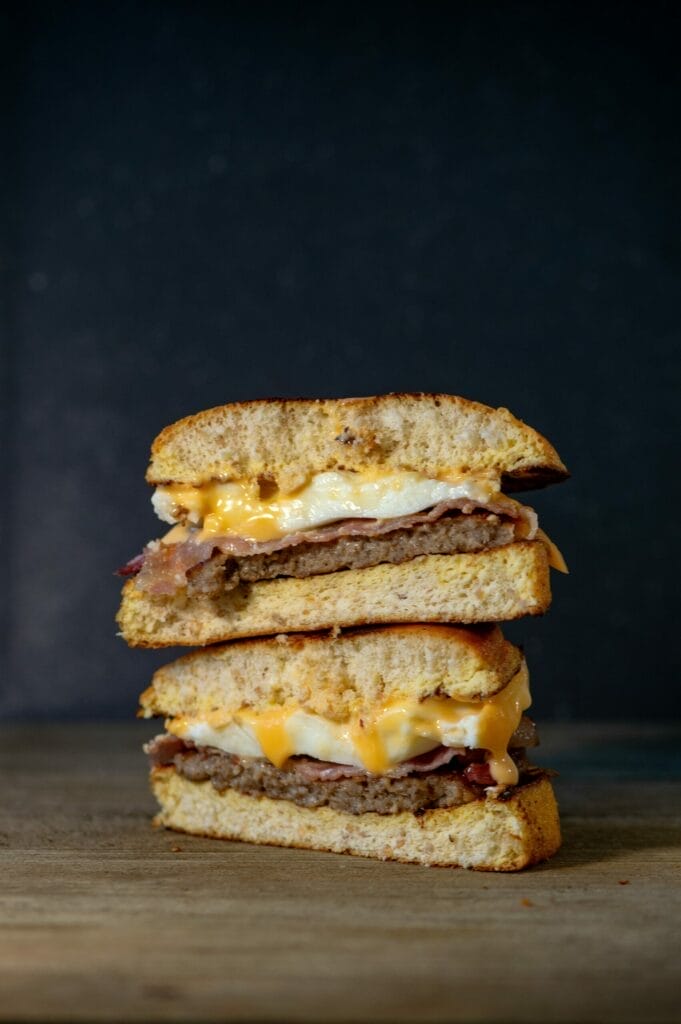
Someone also asked if Americans eat breakfast sandwiches, and we do!
An American breakfast sandwich is typically something like egg, bacon, and cheese.
The British breakfast sandwich is typically a “bacon butty” or “breakfast butty” and often is something like either bacon or sausage with fried egg, served between two slices of buttered bread roll.
So similar to the US breakfast sandwich, but without the cheese, and remember, bacon (and sausage, as a matter of fact) is different in the UK vs the US so despite having similar ingredients, the final result is quite different.
Words for Sandwiches in the UK vs USA
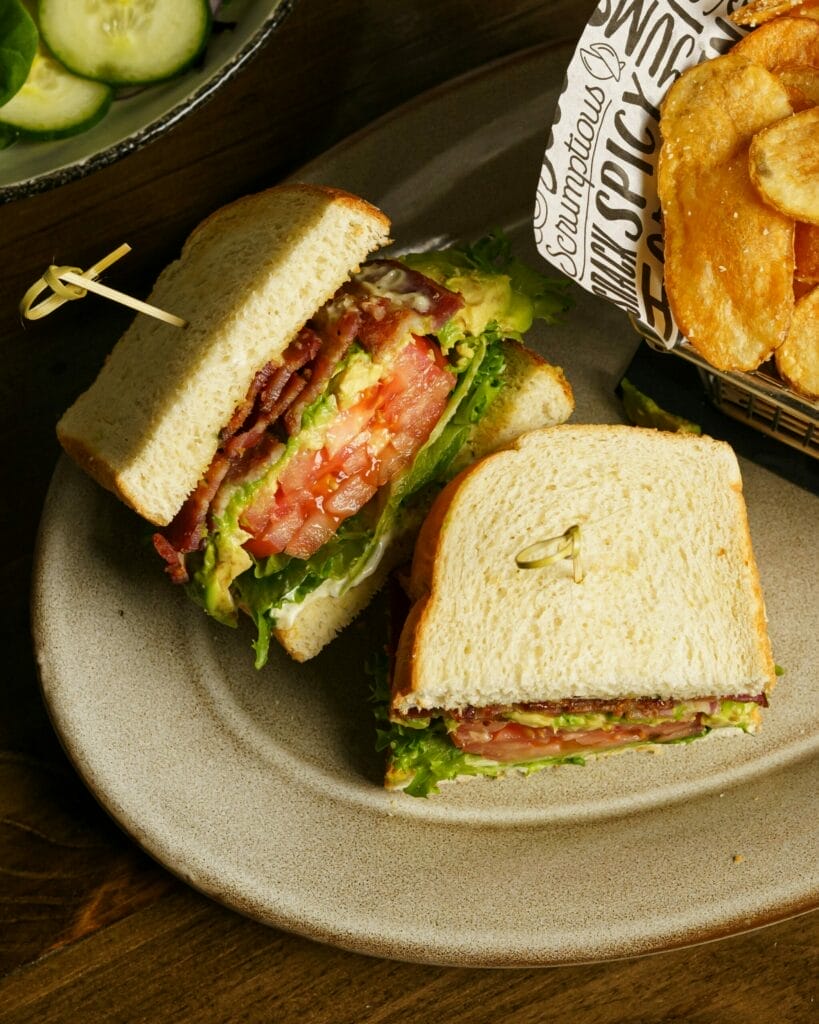
Finally, we’ve got differences around the language of sandwiches.
It honestly makes my head spin, there are so many regional variations that I’m not going to even try to claim I’m covering them all, but in the UK, we’ve got other terms for types of sandwiches depending on the bread and fillings, like bap, buttie, roll, bun, sarnie, as well as toasties.

In the US, we use “sandwich” as a more general catch – all, I feel, but we might say “sammie” or if we’re talking about a sandwich that looks like this – we call it a sub (short for submarine sandwich, but no one would ever call it a submarine sandwich) or a hoagie or a hero.
We don’t use the word bap, buttie, sarnie, or toasties, and we would say “roll” or “bun” but that would typically be referring to the actual bread and not the sandwich itself.
